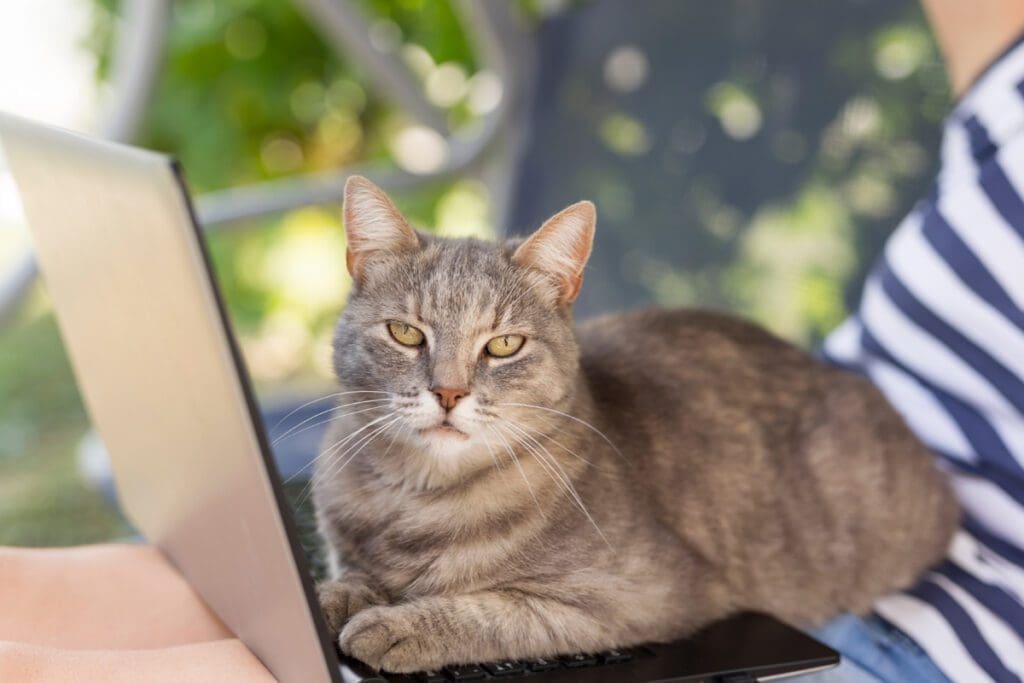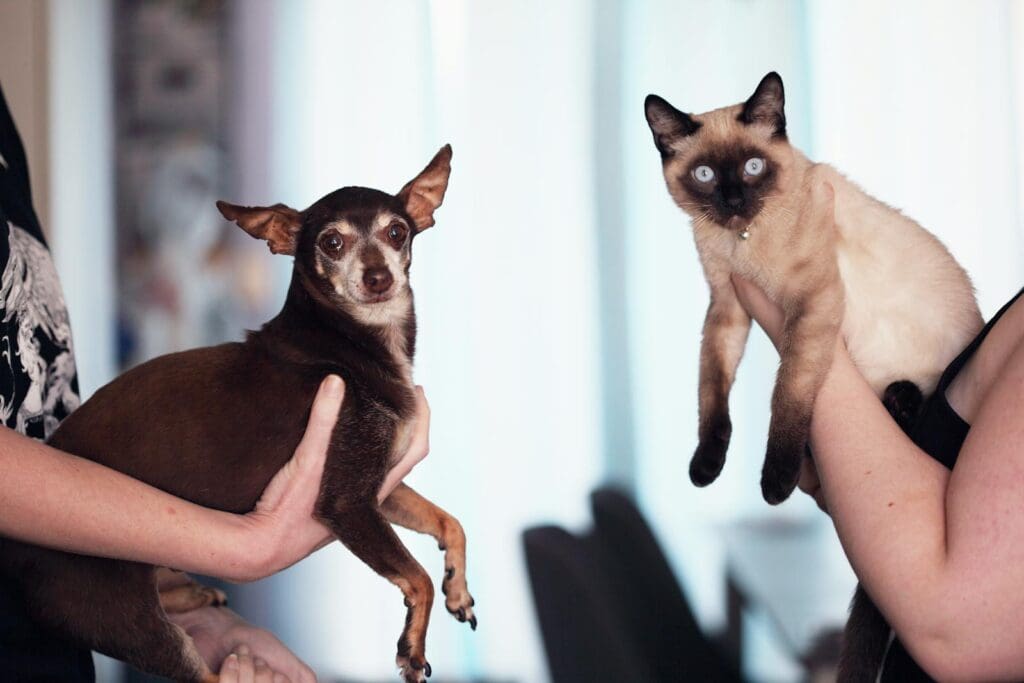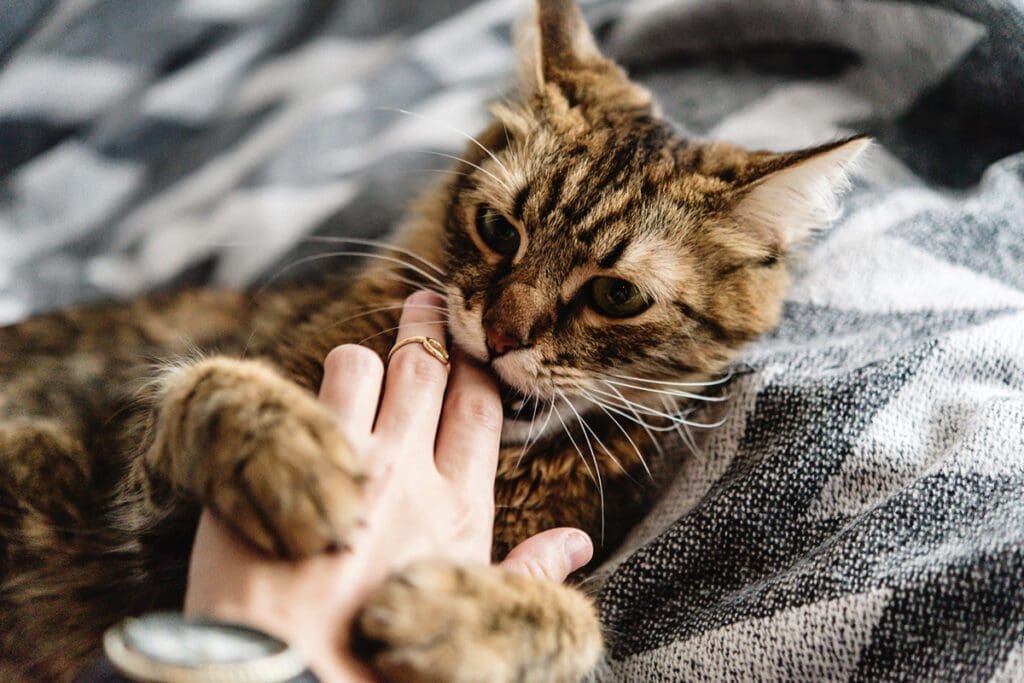There are many misperceptions about the behavior of domestic felines and these myths hurt both cats and the people who own them. We’ll debunk these negative cat myths to improve human relations and save feline lives.
Negative Myths That Hurt Cats

As of 2023, there were 46.5 million households in the US that owned at least one cat. This makes felines the second-most popular pet in America after dogs, according to Forbes. Overall, 66 percent of US households (86.9 million homes) own a pet, with freshwater fish being the third most popular (11.1 million homes).
But despite the popularity of felines as pets, the behavior of cats is widely misunderstood, and these misperceptions about domestic cats hurt both cats and the people who own them.
Stop Comparing Cats to Dogs

One of the greatest misperceptions about cats, and one of the most harmful, is the comparisons cats get to dogs.
“Cats are always compared to dogs, and oftentimes unfavorably,” Candace Croney, a professor at Purdue University and director of the Purdue Center for Animal Welfare Science, told Psychology Today. “People often judge cats against the dog template and assess that cats are deficient, which is not fair to cats.”
“Cats are not oddly behaving little dogs,” Croney added. “They are different, and special in their own ways.”
Myth #1: Cats Are Low-Maintenance Pets

Despite the independent nature of felines, they are not low-maintenance nor self-sufficient animals.
The reality is that cats also have several needs that responsible pet owners should provide in order for their feline to thrive in a human home.
The following five needs are a minimum of what anyone who owns a cat should provide for their pet.
- Survival essentials: An environment that provides essential resources such as food, water, elimination (litter box), scratching (scratching post), and sleeping (bed).
- Safe spaces: Perches and hiding areas.
- Spaces for play: Space and/or toys that allow your cat to play in ways that mimic natural predatory behaviors.
- Sense of smell: An environment that assists a cat in using its sense of smell and use of olfactory communication. This could include catnip, flowers, herbs, treats, sticks, leaves, or cracking windows to allow your cat to take in smells from fresh air.
- Socialization: Positive and consistent social interaction between humans and your cat.
Myth #2: Cats Don’t Need to Be Socialized

Here is one rare exception where thinking applied to dogs should be applied to cats. Dog owners understand how important socialization is. It is equally important for felines.
Socialization means exposing your pet to various stimuli, which include other animals, experiences, sounds, and people.
Unfortunately, while there are many avenues for socializing dogs, opportunities for similar socialization for cats are rare.
Myth #3: You Can’t Train a Cat

Not only is it possible to train a cat, but doing so provides great benefit to the cat for numerous reasons. However, it is crucial to understand that you cannot train your cat like a dog. They are different animals entirely. Cats and dogs don’t learn in the same way. Never use physical discipline with a cat, and yelling may stress your cat.
Cats have shorter attention spans, thus, training sessions must be shorter. However, cats have a longer memory.
The key is using positive reinforcement. Treats usually work well, but it’s always necessary to determine what motivates an individual cat.
Myth #4: Cats Need Little Social Interaction With People

Again, the stereotype of independent cats leads people to believe cats don’t need to interact much with people. This is not the case.
The truth is cats pay close attention to humans and can form strong social bonds with them when people put forth the effort.
Myth #5: Cats Are Not Social With One Another

A major misconception is that cats are universally antisocial. In reality, cats have a flexible social attitude. Experts say how social each individual cat is comes down to the combination of their genetics, early development, and lifetime experiences.
“It’s important to understand that cats are individually variable in their desire for and tolerance of social interactions with other cats,” Croney said.
Some cats will form a pair bond with another cat that will be beneficial, while other cats may be stressed by the presence of another feline.
However, for those cats that do desire social interaction, and those needs are overlooked, it can manifest in negative ways such as eliminating outside of the litter box, persistent hiding, and biting or scratching.
“It also puts the cats at great risk of being either abandoned, relinquished, or euthanized for behavioral reasons,” says Croney. “All of these undermine the positive interactions we should be having with our cats.”






